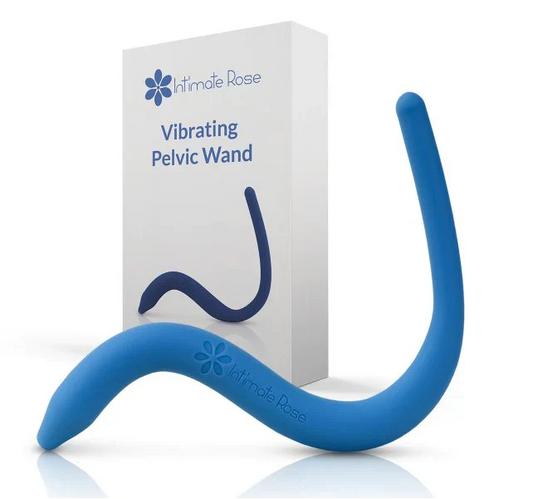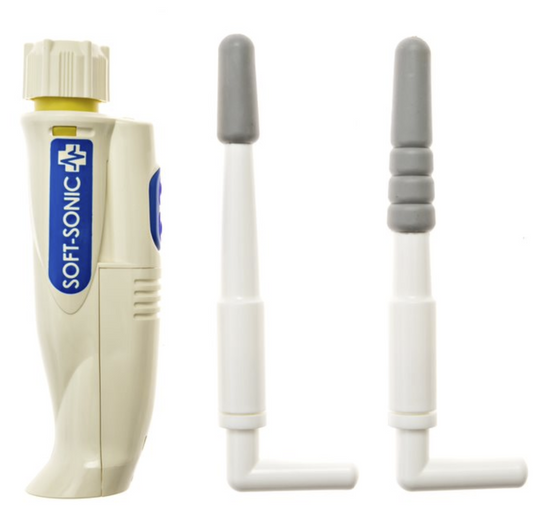
7 Pelvic Floor Relaxation Exercises to Release Tension and Restore Balance
Share
When the pelvic floor becomes too tight (a condition called hypertonicity), the muscles remain in a constant state of tension and have difficulty relaxing. Over time, this can lead to pelvic pain, urinary issues, or discomfort during intimacy.
Several factors can contribute to this tightness. This includes chronic stress, poor posture, overdoing Kegel exercises, habitual clenching, or even past trauma. Each of these can train the body to hold unnecessary tension in the pelvic area.
Relaxation training helps break this cycle by teaching your body how to release tightness and restore a healthy, balanced rhythm. As the muscles learn to relax, blood flow improves, pain decreases, and overall pelvic health is enhanced
To begin retraining your body and finding relief, here are seven pelvic floor relaxation exercises to help you regain comfort and balance.
1. Diaphragmatic (Deep Belly) Breathing

Diaphragmatic breathing serves as the foundation of all pelvic floor relaxation work. The effectiveness of this exercise lies in the anatomical connection between your diaphragm and pelvic floor.
When your diaphragm descends during a deep inhale, your pelvic floor gently stretches and expands. As you exhale, both structures relax together, creating a natural massage effect.
To practice this connection, start by lying on your back or sitting comfortably with good posture. Place one hand on your chest and the other on your abdomen.
As you inhale slowly through your nose, focus on expanding your belly outward, feeling your hand rise. Then exhale slowly through your mouth, letting your belly fall and consciously releasing any tension in your pelvic floor.
Practice this for 5-10 minutes twice daily, or whenever you notice tension building.
2. Reverse Kegel (Pelvic Floor Drop)

Building on the breathing foundation, reverse kegel exercise takes relaxation one step further. Instead of squeezing and lifting your pelvic floor as you would in a traditional Kegel, you're consciously letting it go and gently bearing down, without pushing or straining.
Imagine your sit bones widening apart like opening a book. Visualize your pelvic floor melting downward like warm honey.
The key is avoiding common pitfalls that can undermine your progress. Pushing too hard or holding your breath works against the relaxation you're trying to achieve.
If you feel yourself tensing your abs, jaw, or shoulders, pause and reset with softer effort. Aim for 10-15 reverse Kegels daily, holding each release for 3-5 seconds.
3. Child's Pose with Breath Focus

After sitting or working for a while, shifting into a relaxing position can help your body release tension. The child’s pose gently stretches the hips, lower back, and pelvic floor.
To begin, kneel on the floor and sit back onto your heels. As you exhale, slowly fold your torso forward, extending your arms in front of you or resting them alongside your body, whichever feels most comfortable. Let your forehead touch the ground, using a pillow if needed.
Once settled, turn your attention to your breathing. With each inhale, feel your belly and pelvic floor expand gently toward the floor.
On each exhale, allow everything to soften and release. This position naturally opens the back of your pelvis and releases tension in your tailbone and sacrum. Hold for 2-5 minutes.
4. Happy Baby Pose (Ananda Balasana)

After a forward fold, you can move onto your back for the happy baby pose, a simple position that deeply relaxes the hips and pelvic floor.
Lie on your back and draw your knees toward your chest. Grab the outer edges of your feet, or use a strap if you can't reach comfortably. Gently pull your knees down toward your armpits while keeping your lower back pressed into the floor.
From here, you can rock gently side to side, taking deep breaths that travel down into your pelvis.
This combination opens your hips, lengthens your inner thighs, and creates space for your pelvic floor to release naturally. Hold for 1-3 minutes.
5. Deep Squat (Supported Malasana)

As your body warms and loosens, you can deepen the release with a gentle deep squat, using gravity to assist the stretch.
Stand with your feet slightly wider than hip-width apart, toes turned out slightly. Lower yourself into a deep squat, keeping your heels on the ground if possible. Bring your palms together at your chest and use your elbows to gently press your knees wider.
For extra support, place a yoga block under your sitting bones or lean back against a wall. Focus on breathing deeply and letting gravity do the work.
Rather than forcing the stretch, simply let your body weight gently encourage your pelvic muscles to lengthen.
Those with tight hips or knee issues can modify it by keeping the squat shallower. Hold for 30 seconds to 2 minutes.
6. Pelvic Drop Visualization (Guided Relaxation)

While the previous exercises focused on physical positioning, the pelvic drop visualization technique harnesses the powerful connection between mind and body.
Find a comfortable position and close your eyes. Take several deep breaths to settle your nervous system. Now bring your awareness to your pelvic floor, imagining it as a bowl or hammock made of soft fabric. With each exhale, visualize that fabric releasing downward, becoming heavier and softer.
Many people find that pairing mental imagery with physical sensation creates faster results because your nervous system responds to visualization—when your mind relaxes, your muscles naturally follow. Practice this for 5-10 minutes daily.
7. Hip & Inner Thigh Stretches

Rounding out your practice, hip and inner thigh stretches address the interconnected web of muscles surrounding your pelvic floor.
Try the butterfly stretch by sitting with the soles of your feet together, allowing your knees to fall out to the sides, and gently folding forward. Alternatively, the seated straddle involves sitting with legs extended wide and leaning forward.
The figure-4 stretch also works well—lie on your back, cross one ankle over the opposite knee, and pull the bottom leg toward your chest.
When hip flexors, inner thighs, and glutes are tight, they pull on the pelvis and create compensatory tension in your pelvic floor. By releasing these connected areas, you give your pelvic floor permission to let go.
Use breathing cues throughout, inhale to create length, exhale to soften deeper. Hold each position for 30-60 seconds on each side.
How to Integrate Pelvic Floor Relaxation Exercises into Your Daily Life
Consistency beats duration every single time when it comes to pelvic floor health. Instead of setting aside long sessions, try adding short relaxation breaks throughout your day. After a stressful call, take a few deep breaths.
Before bed, do a reverse Kegel and gentle stretches. After a workout, spend a few minutes in child’s pose. These small habits can lead to real progress over time.
Also, pay attention to your posture and breathing. Slouching or holding your breath can increase pelvic tension, so sit tall and breathe deeply.
Most importantly, avoid re-tensing. Many people clench their abs, glutes, or jaw without realizing it. When you notice it, pause, breathe, and let go.
When to Seek Professional Help
While these exercises help many people find relief, certain situations require expert guidance from a trained professional.
Persistent pain that doesn't improve with self-care after several weeks warrants professional evaluation. Similarly, difficulty urinating or emptying your bladder completely signals that something needs attention.
Visible or felt prolapse symptoms also indicate the need for specialized care, as do symptoms that significantly interfere with your daily life.
A pelvic floor physical therapist can assess your specific situation, identify exactly which muscles are holding tension, and create a personalized treatment plan.
Professional treatment might include biofeedback, manual therapy to release trigger points, or electrical stimulation to help retrain stubborn muscle patterns.
FAQs
Does walking relax your pelvic floor?
Walking can help, especially if you focus on good posture and relaxed breathing. The gentle, rhythmic movement encourages natural pelvic floor coordination. However, walking alone won't release significant tension—you'll need dedicated relaxation exercises too.
How long does it take to relax the pelvic floor?
This varies depending on how long you've had tension and what's causing it. Some people notice improvement within days of starting relaxation exercises, while others need several weeks or months of consistent practice. Be patient with your body.
Can I do pelvic floor exercises at home?
Absolutely. All seven exercises in this article can be done safely at home with no special equipment. However, if you're not seeing improvement after 4-6 weeks, or if you're uncertain whether you're doing them correctly, consulting a pelvic floor therapist can help you progress faster.
Restore Balance with the Pelvic Floor Wand from Prostate Health Store
Your journey to a healthier, more comfortable life begins with understanding and caring for your pelvic floor. By incorporating these relaxation exercises, you can actively work towards reducing pain, improving function, and regaining control.
To support your self-care routine, a pelvic wand can be an invaluable tool for reaching deep, hard-to-access trigger points. Prostate Health Store's Pelvic Floor Wand is meticulously designed with a unique ergonomic shape and smooth, medical-grade silicone to make this process easier and more effective.
Ready to take control of your pelvic wellness? Explore the Prostate Health Store's Pelvic Floor Wand and begin your journey to relief today.




